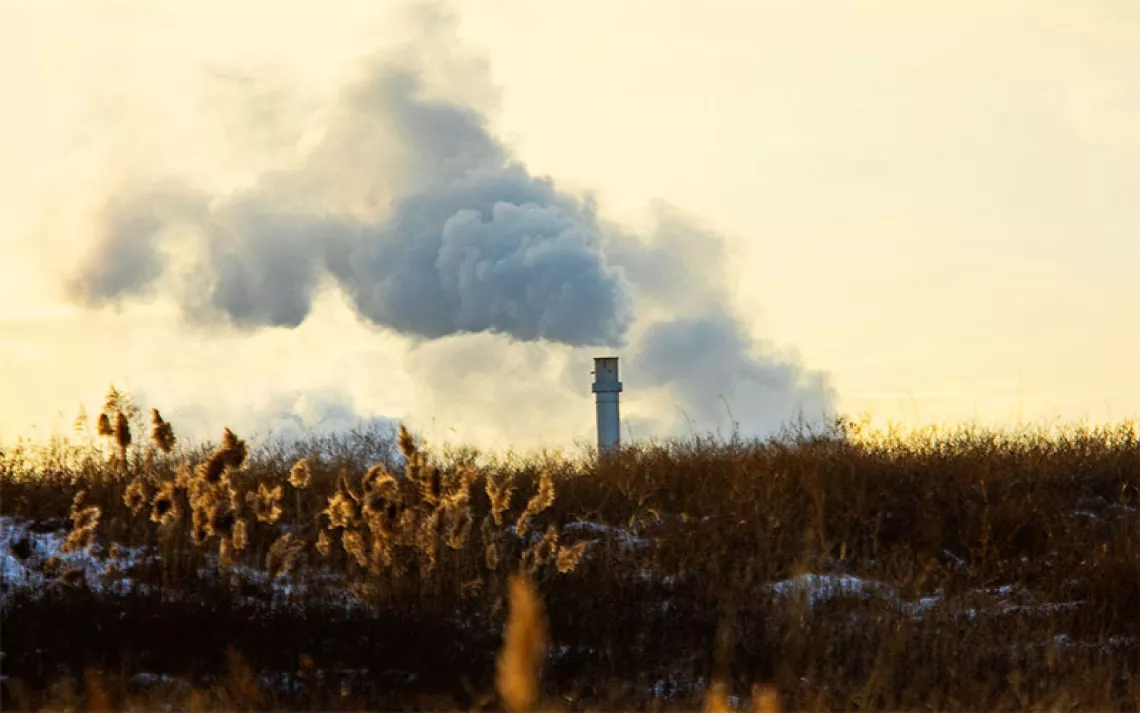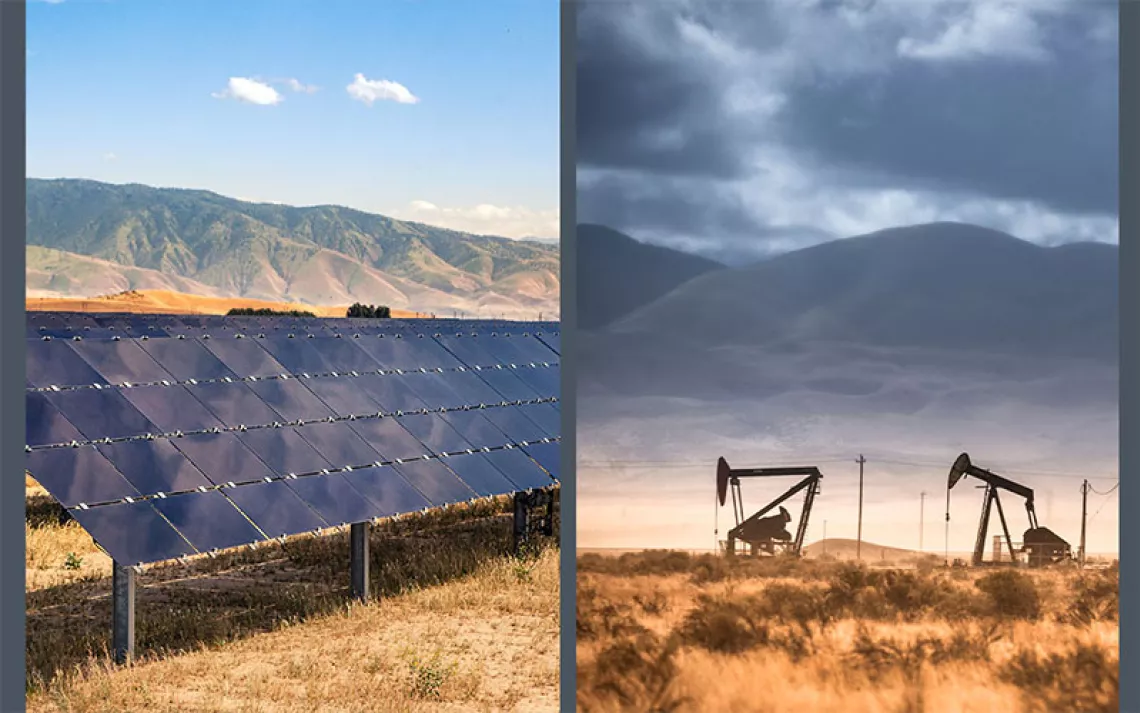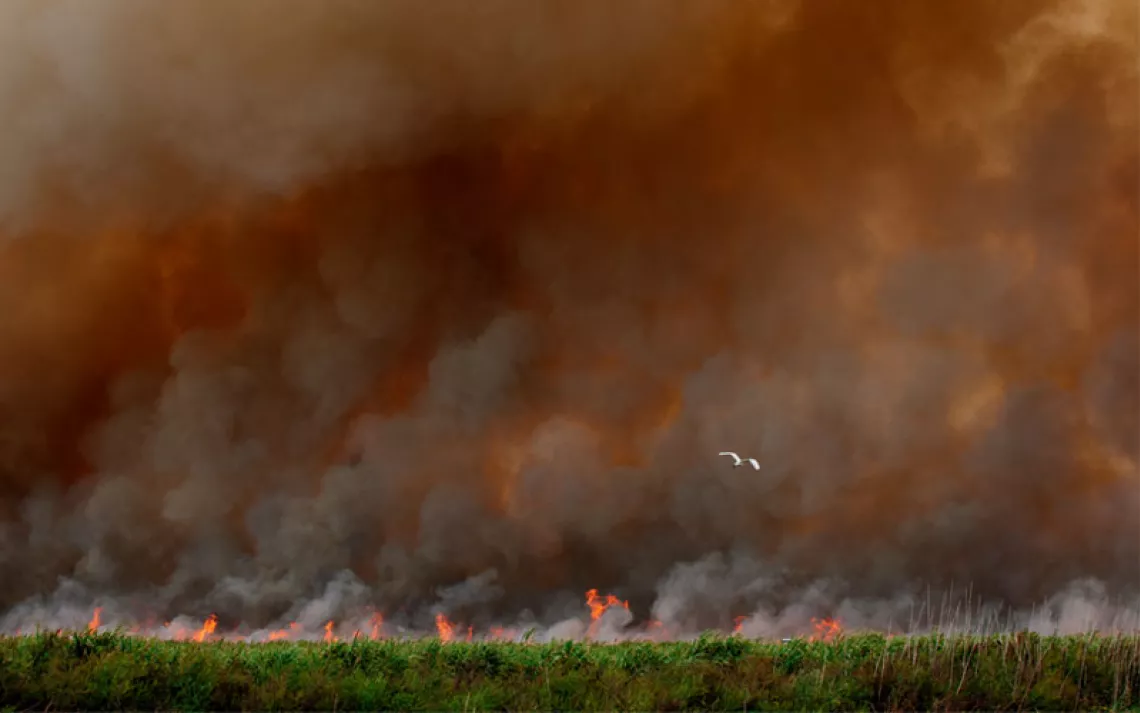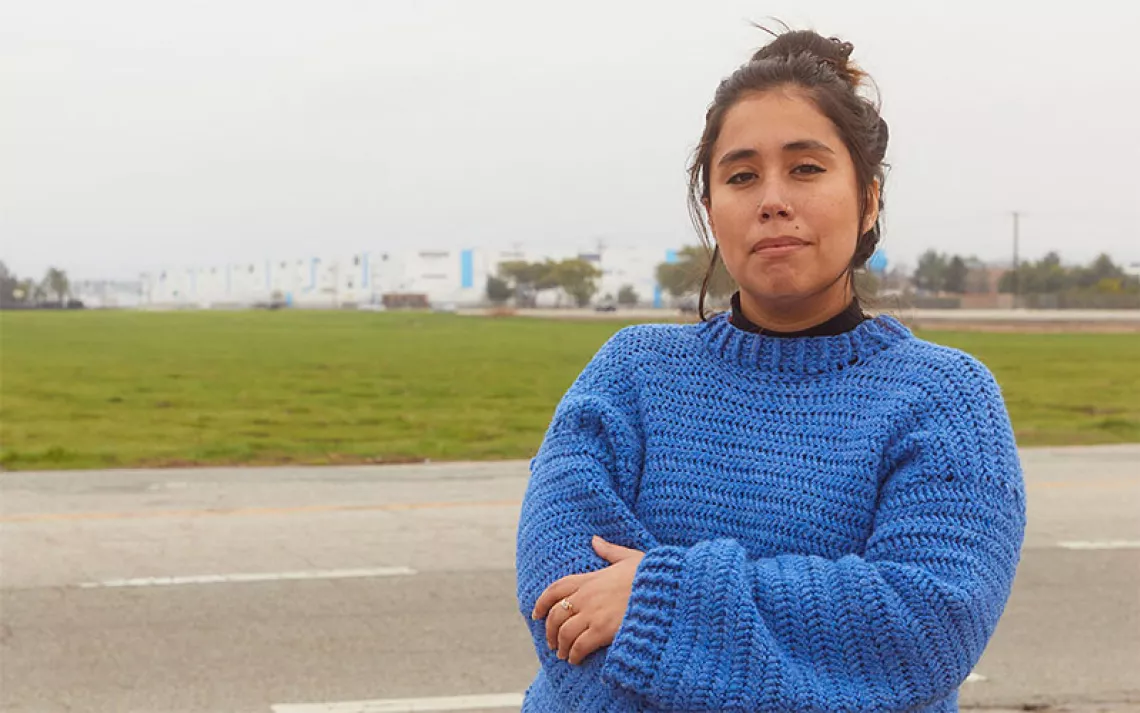Air, Lies, and Instagram
Did the air really get better during lockdown?

The Arroyo Seco Highway in Los Angeles in April 2020. | Photo by Mark J. Terill | Associated Press
At the start of the COVID-19 lockdowns, Kelley Barsanti, an assistant professor of chemical and environmental engineering at the University of California, Riverside, started getting texts and emails from friends. Despite their worries about the pandemic, they couldn’t help but comment on the unusually haze-free skies.
“Oh, this must be so cool,” she remembers one of them saying. “There are no cars on the road, so there’s no pollution!”
Initially, Barsanti agreed. But then she started thinking about it. There was no question that cars caused plenty of air pollution in Southern California, but were they the only things responsible for this sudden change in air quality?
Meanwhile, on the East Coast, Cristina Archer, a professor of meteorology and environmental science at the University of Delaware, had a similar question. “When I started to look into this, I was super excited. I’m like, ‘Everything’s going to be clean!’” she recalled. Like Barsanti, she would discover that the reality was far more complicated.
*
It’s logical to think that taking away a major emission source, like cars, will subsequently improve air quality. The transportation sector is responsible for over 55 percent of nitrogen oxide (NOx) emissions, a pollutant that is clearly linked to asthma, cardiovascular disease, and shortened lifespans.
And NOx did, indeed, go down. Archer found that, across the country, nitrogen dioxide (also known as NO2, and one of the gases that makes up NOx) was much lower in April 2020 compared with the five years prior. Other studies reported similar results. “It was a beautiful relationship,” Archer said. When people drove less, NO2 levels dropped.
These effects also appeared to be long-lasting, at least while cars remained off the roads. Even after most lockdown restrictions were lifted, NO2 (and NOx more generally) remained at an all-time low, possibly due to the persistence of remote work. In fact, by the end of 2020, parts of the US were still experiencing NOx emissions that were 20 percent below pre-pandemic levels, says Shobha Kondragunta, a research scientist at the National Oceanic and Atmospheric Administration. Believe it or not, she said, “it took close to two years for us to come back to pre-pandemic levels in most places.”
Under normal circumstances, scientists would have had to simulate these conditions in a lab or with air quality models. Unfortunately, results produced by either method can be difficult to verify. In that sense, the pandemic provided a rare peek into what the future could look like with stronger emissions controls.
This isn’t the first time that world events have doubled as real-life air quality experiments. There was a noticeable dip in air pollution during the 2008 Global Recession due to reduced economic activity. In 1996, a similar—albeit smaller—shift also occurred after officials implemented local traffic control measures during the Atlanta Olympic Games. Throughout both these events, scientists worked hard to understand how pollution levels were affected by these types of changes. “The science is what's driven all the regulations since the original Clean Air Act amendments in the 1970s,” said Lucas Henneman, an assistant professor of environmental engineering at George Mason University.
Still, the COVID-19 lockdowns were unique in that they created large atmospheric changes at roughly the same time, globally. “Never in modern history can you change habits and emissions so dramatically, so quickly, and at such a large scale,” Archer said. As a result, researchers were given an opportunity to begin teasing out how different pollution mixtures, weather patterns, and even chemistry can all come into play. What happened with NOx was just the beginning.
*
Even though NOx levels went down, the same can’t be said for other pollutants, like PM 2.5, airborne particulate matter that’s so small that it can travel deep into our lungs and cause serious health effects, like bronchitis, asthma, and heart attacks. Henneman’s research found that while PM 2.5 levels decreased in some areas, there were parts of the country where it ultimately increased. According to the EPA, the national average concentration of PM 2.5 was 8 percent higher in 2020 than it was in 2019.
That rise occurred despite the sudden decrease in vehicle use. Unlike NOx, transportation produces less than 10 percent of the PM 2.5 in the air. Of that, a large portion comes from diesel-guzzling trucks, which stayed on the road even when passenger cars disappeared.
However, the reason why PM 2.5 pollution went up in some places is still up for debate. Archer speculated that increased residential electricity use could be one culprit, since an even larger portion of PM 2.5 is emitted by coal- and gas-fired power plants than by trucks.
Kondragunta, meanwhile, pointed to the 2020 record-breaking fires, which at one point, engulfed the entire country with PM 2.5–filled smoke. PM 2.5 can also form in the atmosphere when certain conditions align. For instance, when NOx levels fall, “that can kick off some nonlinear chemistry” that can lead to an increase in different types of PM 2.5, Kondragunta explained. Weather and topography can also affect these chemical reactions, further complicating the matter.
Atmospheric chemistry is also often cited as the explanation as to why ozone levels had such a heterogeneous response, varying widely throughout the country during the early months of the pandemic lockdowns. Ozone, which can cause inflammation of the lungs, is produced when NOx interacts with another group of chemicals—called volatile organic compounds, or VOCs—on warm, sunny days. As a result, ozone concentrations fluctuate depending on how much of these other compounds are present. In regions with high amounts of VOCs relative to NOx—typically more rural areas—decreasing NOx could actually increase ozone concentrations slightly.
There’s little doubt that we should continue to reduce NOx emissions from vehicles, but the example set by the pandemic shows that this is far from the only approach. Going forward, Henneman said, targeting VOCs, NOx, and other chemicals that interact with them is probably the best way to manage air quality. Air quality regulations also need to be multifaceted and adjustable—“basically, knowing in which environment a particular type of chemistry occurs and then going after some targeted reductions,” Kondragunta said.
But this approach will be a challenge when it comes to VOCs. While VOCs once primarily came from cars and trucks, Barsanti recently concluded that in Los Angeles there’s a growing contribution of VOCs coming from off-road sources, such as cargo ships, freight trains, and even lawn equipment like gas-powered mowers and leaf blowers. Scientists are also beginning to wonder if the VOCs coming from household cleaners and personal care items could have helped maintain VOC levels during the pandemic, despite the drop in traffic.
*
At the beginning of the pandemic, social media platforms like Instagram were filled with images of clear blue skies, creating the public perception that the pandemic dramatically reduced air pollution. Was this true? I went ahead and asked the EPA. “In some areas, yes. In some areas, no,” wrote an EPA spokesperson in response.
However, they also pointed out that nationally, air pollution has decreased quite a lot over the past few decades. Existing regulations are still working, even if the results aren’t as sudden and dramatic as what we saw two years ago. Archer agrees. “To really change pollution, it's more effective to do small changes, forever, rather than a dramatic change but for a short amount of time.”
Nevertheless, the pandemic has reinforced a valuable lesson: The atmosphere is a complicated system, and reducing one pollutant can result in unexpected consequences. “We have to stop and assess, and reassess, whether the atmosphere is still behaving like it was when these decisions were made,” Barsanti said.
That’s a key step of the process, she said. “We can revise and say, ‘OK, this was true 10 years ago … and now we need to make changes. That’s really the only way that we move forward and continue to improve.”
 The Magazine of The Sierra Club
The Magazine of The Sierra Club



